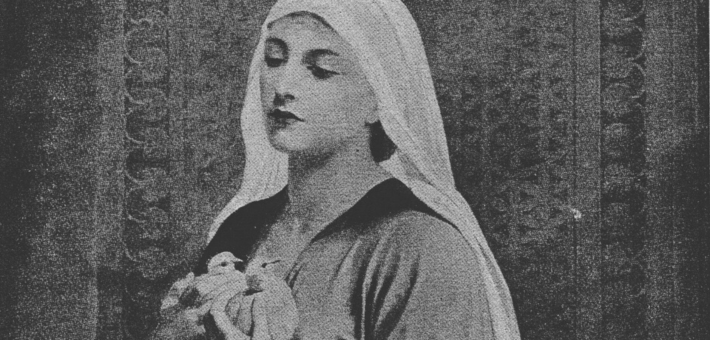Commentary on Mark 12:38-44
Sacrificial giving is, according to ChatGPT, the most popular main point of sermons on Mark 12:41–44. The second-most popular one is basically the same as the first: God’s value system is different from human assessment. These points support the view that the widow is a model disciple, whereas the scribes in 12:38–40 represent the opposite of ideal discipleship. Many interpreters say that the widow is doing what Jesus has taught about discipleship (8:34–37) and what Jesus told the rich man to do (10:21). It is also often noted that she is offering her whole life (12:44) to God, thereby keeping what Jesus regards as the greatest commandment (12:30). This interpretation seems compelling.1
But do you think that telling a rich man to sell his possessions for the poor is the same as telling a widow to give her last dimes to the temple? Can you imagine Jesus urging the destitute to give whatever little things they have to God? Have you seen any Hebrew Bible passage that demands everything from the needy? I believe that the popular interpretation of the widow is based on a grave misunderstanding of Jesus’ teaching on discipleship.
Peter did say that the disciples had left everything and followed Jesus (10:28). Jesus said in reply that anyone who leaves one’s “house [Greek oikia] or brothers or sisters or mother or father or children or fields for my sake and for the sake of the good news” (10:29) would be rewarded. This saying well applies to the disciples because they left their families and possessions behind. Peter, Andrew, James, and John had their own boats and nets (1:16–20). Peter and Andrew had a house (Greek oikia, 1:29). Peter had a wife (1 Corinthians 9:5) and a mother-in-law (Mark 1:30).
By contrast, the widow’s two small copper coins (12:42) are as good as nothing. The coins are not like the “everything” the disciples left behind. The widow would have not been so poor if her husband had left enough for her, if she had an adult son or father who could support her, or if she had remarried. It looks like our widow did not have a house, brothers, sisters, mother, father, children, or fields—anyone or anything that would have helped her financially.
The Jesus I know does not ask the destitute to squeeze themselves to the last drop to serve God. Rather, Jesus comforts and blesses them. He condemns the rich and the powerful who exploit the poor. Can we say the same thing about Mark 12:41–44? Yes, I believe so. Both the immediate context and the larger literary context support it.
In 12:35–40, Jesus critiques the scribes harshly. In verses 35–37, Jesus implies that they do not understand the Scriptures, especially regarding the Messiah; that is part of why they not only fail to recognize Jesus as the Messiah but also oppose him. In verses 38–40, Jesus critiques the scribes’ social and religious practices. The most relevant part is verse 40, in which Jesus says that the scribes “devour widows’ houses” (Greek oikia in the plural).
The graphic language recalls Ezekiel 34:2–3: “Woe, you shepherds of Israel who have been feeding yourselves! Should not shepherds feed the sheep? You eat the fat; you clothe yourselves with the wool.”2 If the leaders had kept the Law (for example, Deuteronomy 24:19–20; 26:12–13) and feared God, who is portrayed as the ultimate defender of widows in many passages of the Hebrew Bible, the widow in our passage would have not become that poor. The widow’s extreme poverty is the evidence that the leaders have failed.3
Let us step back and look at the larger context. Jesus’ entry into Jerusalem (and into the temple) at the beginning of chapter 11 and his departure from the temple at the beginning of chapter 13 constitute a literary unit. From the cursing of the fig tree in 11:12–14 to Jesus’ declaration of the destruction of the temple in 13:2, a major theme of the section is the destruction of the temple. This theme is clearly related to the religious leaders, as the section is filled with their challenges to Jesus (11:27–33; 12:13–27) and Jesus’ criticisms of them (12:1–11, 35–40).4
If our passage on the widow concludes a series of events at the temple in chapters 11–12, and if Jesus’ declaration in 13:2 is the conclusion of the section, it makes sense to relate our passage to the overarching ideas of the section: the destruction of the temple and the failures of the religious leaders.
In a sense, the last scene at the temple (the widow passage) harkens back to the first scene (the cleansing of the temple). In 11:17 Jesus quotes Jeremiah 7:11, which is part of Jeremiah’s temple sermon. In the same sermon Jeremiah delivers a message from God: “If you do not oppress the alien, the orphan, and the widow … then I will dwell with you in this place” (Jeremiah 7:6). This is hardly a new idea in prophetic literature. For instance, according to Amos, a major reason for the fall of the Northern Kingdom was the oppression of the poor (for example, Amos 2:6–7).
I feel that the Gospel of Mark is asking the following question here: When does a temple of God hit the rock bottom and lose its reason to exist? Is it when merchants do business in the temple (11:15–16)? Is it when the religious leaders challenge the authority of the Son of God in the temple (11:27–28)? Is it when they seek to trap the Messiah politically (12:13–15)? Is it when they misunderstand the Scriptures (12:24, 35)? Is it when they say long prayers for the sake of appearance (12:39)?
Jesus was sitting down at the Court of the Women in the temple, looking at the “exceedingly beautiful and lofty columns”5 there. He turned his eyes to the temple treasury, knowing that the temple had already accumulated immense wealth.6 He saw “many rich people” (12:41) offer large sums of money. Perhaps it was when a widow put in her last coins that the temple hit the rock bottom.
The presence of one destitute widow questions the reason for the temple’s existence. As always in Mark, the disciples fail to understand: one of them said, “Look, Teacher, what large stones and what large buildings!” (13:1). While the disciples were amazed at the splendid appearance of Herod’s temple, Mark’s Jesus saw no reason for the temple to exist anymore—not even a stone upon a stone.
Notes
- This interpretation of the widow reminds me of the popular interpretation of the Bartimaeus story. When Bartimaeus heard that Jesus was calling him, “throwing off his cloak, he sprang up and came to Jesus” (Mark 10:50). Here commentators usually note that Bartimaeus is being an ideal disciple because, unlike the rich man in Mark 10:22, he is willingly letting go of one of the few things or perhaps the only thing he has as a beggar. For more discussions of the Bartimaeus story, see my commentary on Mark 10:46–52.
- For more examples of the expression that the leaders are “eating” the people of Israel, see Ezekiel 22:25 (LXX) and Micah 3:1–3.
- Jesus in Mark sees the crowds—that is, the people of Israel—as “sheep without a shepherd” (6:34). As a shepherd (14:27), Jesus has compassion for them; he “feeds” the hungry crowds with teaching and then with food (6:34–44; 8:1–9).
- Cf. my commentary on Mark 12:28–34.
- Josephus, Jewish War 5.200 (LCL 3:261); noted in R. Alan Culpepper, Mark, Smyth & Helwys Bible Commentary (Marcon, GA: Smyth & Helwys, 2007), 428.
- Josephus says that in the temple treasury there were “vast sums of money, vast piles of raiment, and other valuables; for this, in short, was the general repository of Jewish wealth” (Josephus, Jewish War 6.282; LCL 3:459); cf. Culpepper, Mark, 428.


November 10, 2024